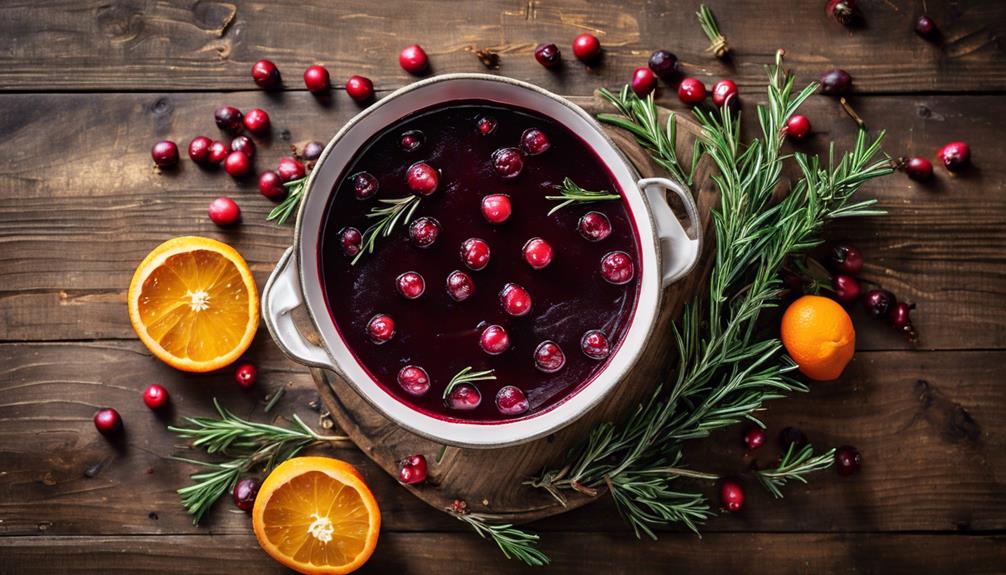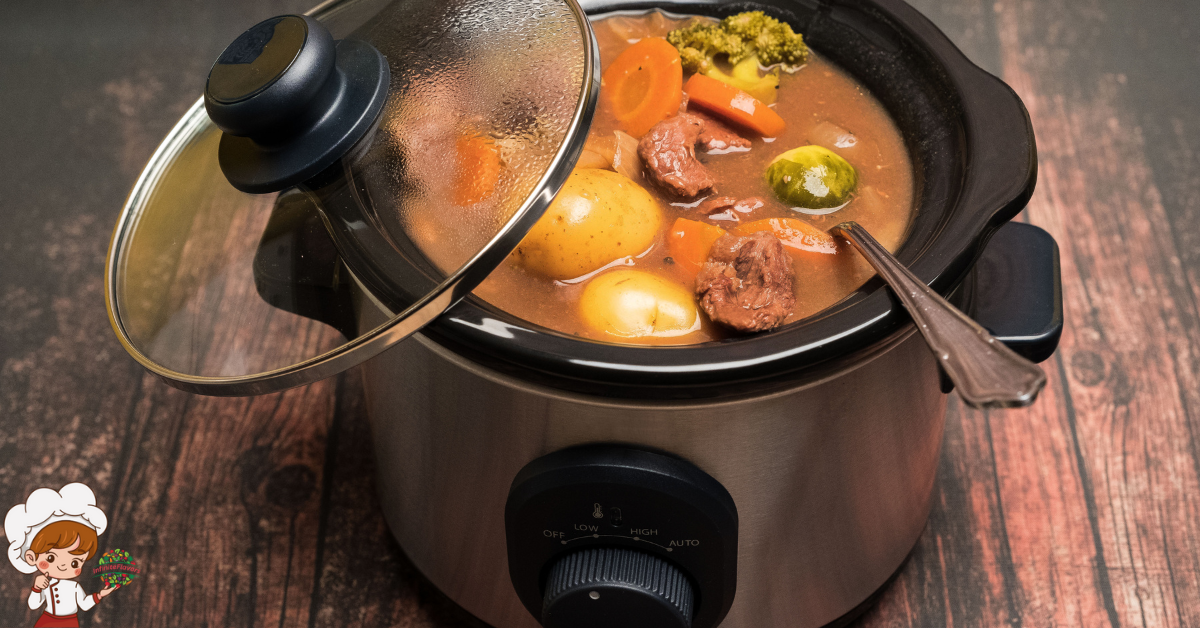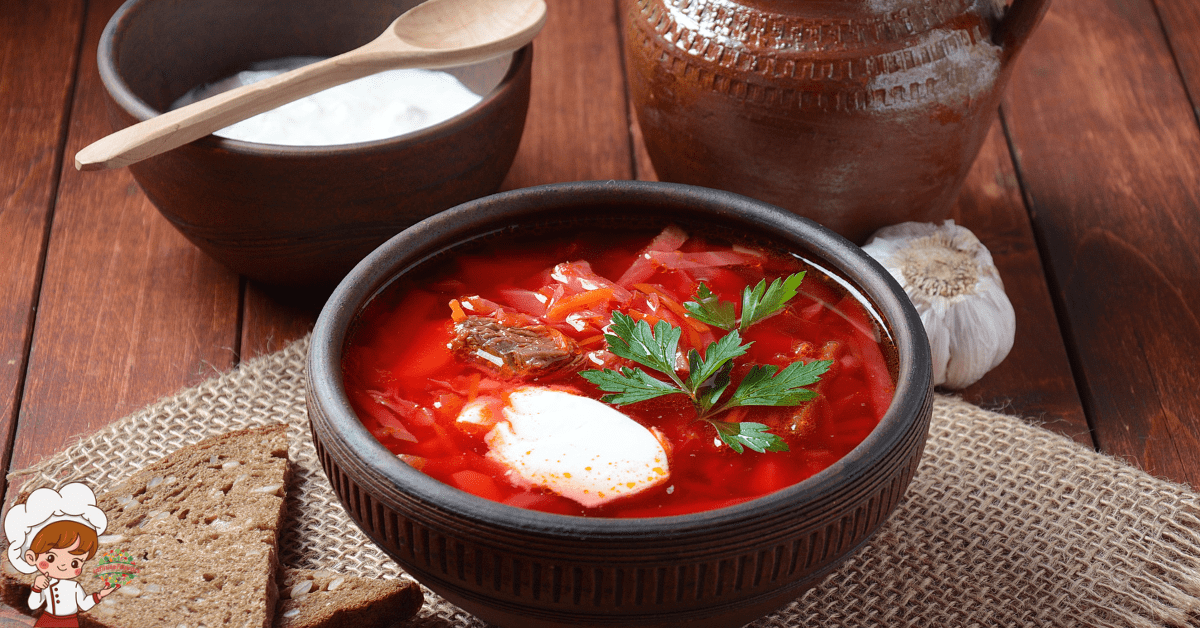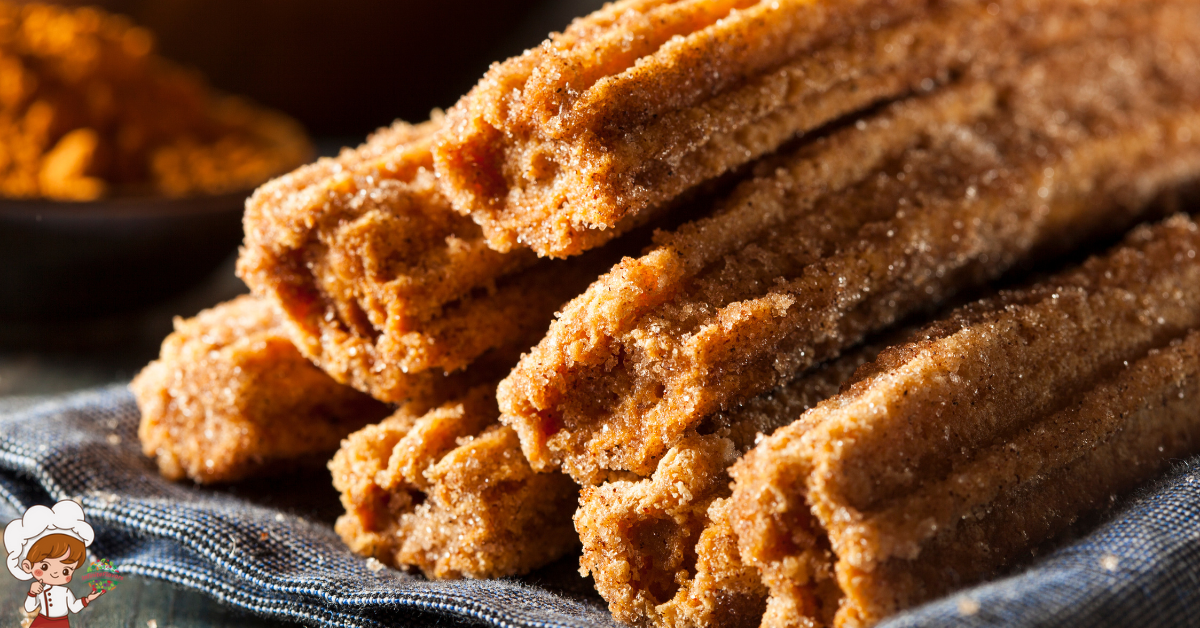The Best Taco Salad Bold History of a Tex-Mex Classic
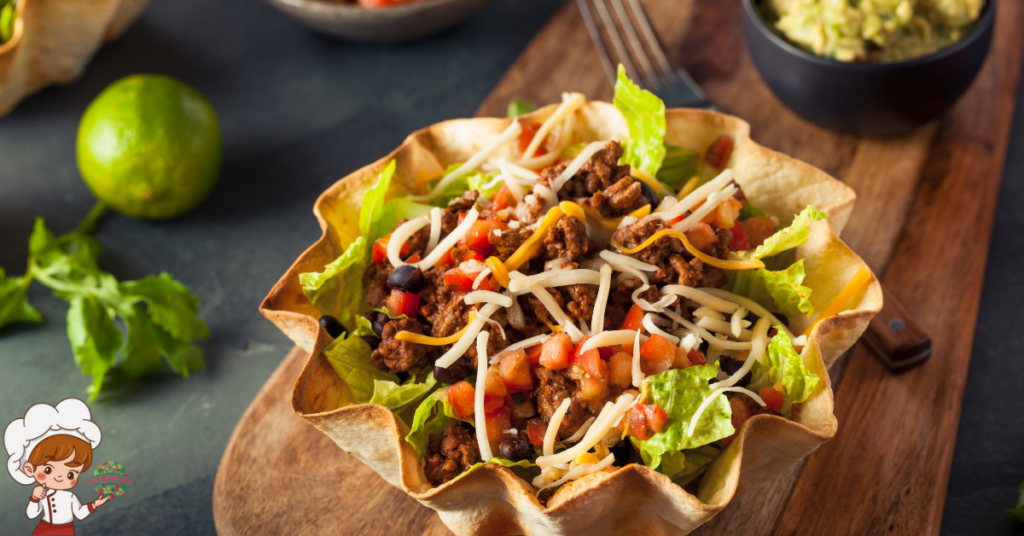
The Best Taco Salad Bold History; Colorful, crunchy, flavorful, and wildly versatile — taco salad is a dish that proudly bridges the gap between Mexican-inspired flavors and American culinary creativity. With its layers of seasoned ground beef, crisp lettuce, shredded cheese, and zesty toppings like salsa and sour cream, it’s easy to see why taco salad has earned a lasting place in casual dining, home kitchens, and fast-food menus across the United States.
But while many of us enjoy taco salad today as a simple weeknight meal or potluck favorite, the story behind its origins is far more fascinating. Where did taco salad come from? Is it Mexican? Tex-Mex? Or something else entirely?
In this article, we’ll explore the rich history, cultural roots, and culinary evolution of taco salad — and answer some of the most frequently asked questions about this beloved dish.
What Is Taco Salad?
At its core, taco salad is a fusion dish — a deconstructed taco served as a hearty salad. It typically features:
- A base of lettuce (usually iceberg or romaine)
- Seasoned ground beef or chicken
- Cheese, beans, tomatoes, salsa, and sour cream
- Tortilla chips or a fried tortilla bowl for crunch
Over the years, many variations have emerged, including versions with rice, corn, guacamole, jalapeños, and even ranch dressing. Though it’s often associated with Mexican food, taco salad is very much a product of American innovation with Mexican flavors.
The Origins of Taco Salad: An American Creation
While the name might suggest a direct link to traditional Mexican cuisine, taco salad is not an authentic Mexican dish. Its origin lies in the United States, specifically within the realm of Tex-Mex cuisine — a fusion of Mexican and American culinary traditions that developed in Texas in the 20th century.
The Tex-Mex Boom
Tex-Mex cuisine was born out of necessity and creativity among Mexican-American communities, who used locally available ingredients to recreate traditional Mexican dishes. Over time, this hybrid style of cooking took on a life of its own, with hallmark ingredients like ground beef, cheddar cheese, canned beans, and flour tortillas — items not typically found in classic Mexican cooking.
By the mid-20th century, Tex-Mex had become wildly popular, particularly in the Southwest U.S., and restaurants began to innovate with Mexican-inspired dishes that would appeal to American tastes.
The 1960s and the Taco Salad Revolution
While it’s difficult to pinpoint a single inventor of the taco salad, food historians trace its emergence to the 1960s or early 1970s in Texas. It began appearing on menus at Tex-Mex restaurants as an accessible way to enjoy taco flavors in a fresh, salad format.
One of the earliest known mainstream adopters of the taco salad concept was the fast-food chain Taco Bell, which began serving a version of taco salad in the 1980s, featuring a deep-fried tortilla bowl filled with lettuce, ground beef, cheese, sour cream, and salsa.
Its popularity soared due to its:
- Ease of customization
- Perceived healthiness (as a “salad”)
- Familiar taco flavors
Taco Salad and the Deep-Fried Tortilla Bowl
Perhaps one of the most iconic components of a traditional taco salad is the fried tortilla bowl — a large flour tortilla molded and fried into a crispy, edible dish.
This element not only provides a crunchy texture but also presents the meal in a fun, eye-catching way. Though the origins of the fried tortilla bowl are a bit hazy, its presence on Tex-Mex menus became widespread in the 1970s and 1980s, popularized by casual dining restaurants and buffet-style establishments.
Over time, the bowl became almost synonymous with taco salad, despite not being part of any Mexican tradition.
Taco Salad in American Culture
Restaurant Menus and Fast Food
By the late 20th century, taco salad had become a staple in American eateries, from mom-and-pop diners to national chains. Its ease of assembly and broad appeal made it a perfect fit for:
- Tex-Mex restaurants
- Mexican-American fast-food chains
- Casual family-style restaurants
Chains like Chili’s, Taco Bell, On the Border, and even Wendy’s embraced taco salad in various forms. Wendy’s, for example, introduced their own taco salad with chili and tortilla chips, further blurring the line between salad and entrée.
At-Home Popularity
Taco salad also became a hit in home kitchens, especially during the 1980s and 1990s, when convenience foods were king. Families loved the dish for its:
- Quick preparation
- Budget-friendly ingredients
- Customizability for picky eaters
Taco salad became a staple at potlucks, picnics, and parties — often served in large bowls with crushed Doritos or Fritos for added crunch.
Is Taco Salad Healthy?
That depends. While the word “salad” might suggest healthfulness, traditional taco salad — especially versions served in a fried tortilla bowl and topped with sour cream, cheese, and ground beef — can be calorie-dense.
However, healthier variations abound:
- Using lean meats or plant-based protein
- Substituting Greek yogurt for sour cream
- Adding more vegetables and fresh herbs
- Skipping the fried bowl and opting for baked tortilla chips
This adaptability makes taco salad appealing to a wide range of dietary preferences.
Global Influence and Reinvention
Though taco salad began as a U.S. creation, it has made its way into international kitchens thanks to the globalization of Tex-Mex cuisine. Today, you’ll find variations of taco salad served across the world, particularly in countries with large American expat communities.
Moreover, it’s frequently reinvented to suit modern food trends — including:
- Vegan taco salad with lentils or jackfruit
- Keto taco salad with no beans or chips
- Fusion taco salads with Asian-inspired dressings or Middle Eastern spices
Cultural Controversy: Taco Salad and Cultural Appropriation
As with many fusion foods, taco salad exists in a complex space between appreciation and appropriation. Some critics argue that dishes like taco salad — especially when marketed as “authentic Mexican” — misrepresent Mexican culinary traditions and perpetuate stereotypes.
It’s important to acknowledge taco salad’s roots in Tex-Mex culture, a distinctly Mexican-American invention, and to celebrate its innovation without conflating it with traditional Mexican cuisine.
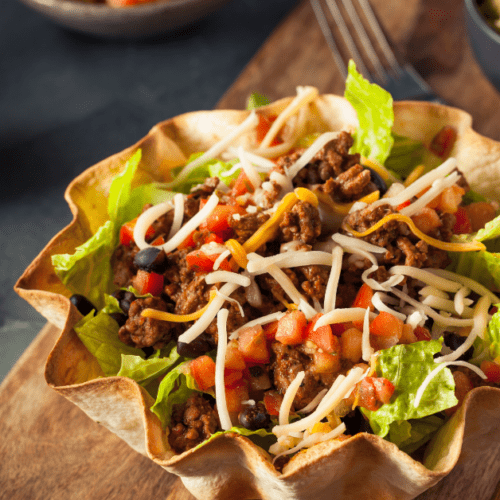
🌮 Classic Taco Salad Recipe
Ingredients
- For the meat:
- 1 pound ground beef or ground turkey
- 1 tablespoon olive oil if using lean meat
- 1 packet taco seasoning or 2 tablespoons homemade mix
- ¼ cup water
- For the salad base:
- 6 cups shredded romaine or iceberg lettuce
- 1 cup cherry tomatoes halved
- 1 cup canned black beans drained and rinsed
- 1 cup corn fresh, canned, or thawed frozen
- 1 cup shredded cheddar or Mexican blend cheese
- 1 avocado diced
- ½ red onion finely chopped
- 1 cup crushed tortilla chips or strips
- Optional toppings:
- Sour cream or Greek yogurt
- Salsa or pico de gallo
- Jalapeño slices
- Fresh cilantro
- Lime wedges
- Hot sauce
Instructions
- 🔪 Instructions:
- Cook the Meat:
- In a large skillet over medium heat, cook the ground beef until browned and fully cooked, about 7–9 minutes.
- Drain excess fat if needed.
- Add the taco seasoning and ¼ cup water. Stir and simmer for 2–3 minutes until the mixture thickens. Remove from heat.
- Assemble the Salad:
- In a large bowl or individual serving bowls, layer the lettuce as the base.
- Add the cooked taco meat on top.
- Arrange tomatoes, black beans, corn, cheese, avocado, and onion around the bowl.
- Add Crunch:
- Sprinkle crushed tortilla chips or strips over the top for texture.
- Top and Serve:
- Finish with a dollop of sour cream or yogurt, a spoonful of salsa, and your choice of additional toppings.
- Serve immediately, optionally with lime wedges on the side.
FAQ: The Best Taco Salad Bold History
Q: Is taco salad actually Mexican?
A: No. Taco salad is a Tex-Mex dish, developed in the United States using Mexican-inspired ingredients. It is not a traditional Mexican food.
Q: When was taco salad invented?
A: Taco salad likely originated in Texas in the 1960s or 1970s, though its exact origin is hard to pinpoint. It gained popularity in restaurants and fast-food chains by the 1980s.
Q: Who invented taco salad?
A: While there is no definitive inventor, taco salad was likely created by Tex-Mex restaurant chefs in the U.S., possibly in Texas. It evolved as a variation of traditional tacos, reimagined as a salad.
Q: What’s in a classic taco salad?
A: Common ingredients include ground beef, lettuce, cheddar cheese, tomatoes, sour cream, salsa, and tortilla chips or a tortilla bowl. Some versions include beans, rice, or avocado.
Q: Is taco salad healthy?
A: It can be. While traditional taco salad can be high in calories, you can make it healthier by using lean meat, more vegetables, and skipping the fried tortilla bowl.
Q: Is taco salad eaten in Mexico?
A: No. Taco salad is not part of traditional Mexican cuisine and is largely unknown in most parts of Mexico. It’s an American invention inspired by Mexican flavors.
Q: Can taco salad be made vegetarian or vegan?
A: Absolutely! Many plant-based versions exist using beans, lentils, tofu, or meat alternatives. Vegan cheese, sour cream, and dressing substitutes are also available.
Q: What kind of dressing is used in taco salad?
A: Taco salad is often topped with salsa, sour cream, or ranch dressing. Some versions use a creamy taco-flavored dressing or a vinaigrette.
Q: Why is taco salad served in a tortilla bowl?
A: The tortilla bowl adds crunch and makes for a fun presentation. It became popular in U.S. restaurants during the 1970s and 1980s but is not part of traditional Mexican cooking.
Q: How did taco salad become popular?
A: Taco salad gained popularity due to its customizable nature, appealing flavors, and the growing popularity of Tex-Mex food in America — especially through fast food and casual dining in the late 20th century.
Final Thoughts
Taco salad may not be a traditional Mexican dish, but it holds a special place in the American culinary landscape. With its flavorful ingredients, colorful presentation, and endless versatility, taco salad is a celebration of creativity and cultural fusion.
As Tex-Mex cuisine continues to evolve and inspire, taco salad remains one of its most iconic and accessible creations — a dish that brings people together around the table, one crunchy bite at a time.
Whether you enjoy it in a tortilla bowl, over a bed of greens, or with a modern twist, taco salad proves that fusion food can be just as meaningful and delicious as tradition.



